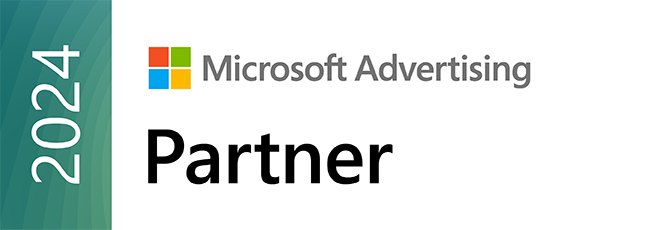Impact of AI: Adapting to LinkedIn’s Discontinuation of Lookalike Audiences

Introduction:
As the digital marketing landscape continuously evolves, staying informed and adaptive is crucial for success. A significant change is on the horizon for marketers utilizing LinkedIn’s advertising platform. Effective February 29, 2024, LinkedIn will discontinue its lookalike audiences feature, a tool many of us have relied on to expand our reach and connect with similar prospects.
Understanding the Change:
LinkedIn’s decision to phase out lookalike audiences marks a significant shift. From this date, new lookalike audiences cannot be created, and existing ones will not be editable. Existing lookalike audience data will become static, meaning they won’t refresh, turning your dynamic lookalike audience into a fixed dataset. While active campaigns using lookalike audiences will continue with the static data, the ability to dynamically match audience profiles based on current trends and data will cease.
Why the Shift Matters:
Lookalike audiences have been a cornerstone in digital marketing strategies, enabling organizations to reach users similar to their existing customer base. This shift demands a strategic rethink for marketers, especially those in the association and event sectors, who often rely on precise targeting to connect with niche audiences.
Embracing New Alternatives with AI:
1.Predictive Audiences: LinkedIn suggests the use of predictive audiences as an alternative. These leverage LinkedIn’s AI capabilities combined with your data sources, like Lead Gen Forms, contact lists, or conversion data, to form audiences that are likely to convert. This tool offers a more data-driven approach to audience building, ensuring high-intent targeting for your campaigns.
2.Audience Expansion: Another recommended approach is Audience Expansion, which works with Matched Audiences and LinkedIn’s attribute targeting. This option broadens your campaign’s reach by including profiles that share similarities with your primary audience, based on attributes like skills or interests.
Transitioning to Predictive Audiences:
Shifting to predictive audiences involves understanding their mechanics. These audiences use your specific data sources to identify potential leads with high conversion likelihood. However, there are constraints to consider, such as the limitation of 30 predictive audiences per ad account and the inability to share these across accounts. Additionally, Audience Expansion is not available for campaigns using predictive audiences.
Action Plan for Marketers:
1.Audit Your Current LinkedIn Strategy: Assess how reliant your current campaigns are on lookalike audiences. Understand the impact of this change on your targeting strategy.
2.Explore Predictive Audiences: Familiarize yourself with predictive audiences, their requirements, and how they can be integrated into your marketing efforts.
3.Data-Driven Audience Building: Ensure your data sources meet the criteria for creating predictive audiences. This might involve combining multiple data sources or optimizing your data collection methods.
4.Test and Learn: As with any new tool or strategy, it’s important to test predictive audiences and analyze their performance against your marketing objectives.
The Bottom Line:
LinkedIn’s discontinuation of lookalike audiences is a reminder of the ever-changing nature of digital marketing. While this change poses challenges, it also opens up new opportunities for more data-driven, AI-enhanced audience targeting strategies. By embracing these new tools and adapting our approaches, we can continue to effectively reach and engage our target audiences.
FAQ
- What is the significance of LinkedIn discontinuing lookalike audiences?
The decision to discontinue lookalike audiences marks a pivotal shift in digital marketing. This tool, vital for expanding reach and connecting with similar prospects, will become static, halting dynamic audience matching. Marketers, especially in niche sectors like associations and events, must recalibrate strategies for precise targeting. - What are the recommended alternatives to lookalike audiences?
LinkedIn proposes two alternatives: predictive audiences and audience expansion. Predictive audiences utilize AI and your data to forecast conversion likelihood, while audience expansion broadens reach based on attributes like skills or interests. These alternatives offer data-driven approaches to maintain effective targeting post-lookalike audiences. - How do predictive audiences work, and what are their limitations?
Predictive audiences use your data to identify potential leads likely to convert. However, constraints include a maximum of 30 audiences per ad account and the inability to share them across accounts. Additionally, audience expansion isn’t compatible with campaigns using predictive audiences, necessitating careful planning. - What steps should marketers take to transition to predictive audiences?
Marketers should begin by auditing their current LinkedIn strategy to gauge reliance on lookalike audiences. Exploring predictive audiences, understanding their mechanics, and ensuring data sources meet requirements are crucial. Testing and learning from predictive audience performance against objectives is vital for successful integration. - What does the discontinuation of lookalike audiences signify for digital marketing’s future?
LinkedIn’s move highlights the dynamic nature of digital marketing. While it presents challenges, it also prompts innovation in data-driven, AI-enhanced targeting strategies. Adapting to these changes and embracing new tools will empower marketers to continue effectively engaging target audiences in an evolving landscape.
A thought-leadership piece written by the CEO of Kabloom, Richard Torriani.
Updated on May 11th, 2024

See how we rank as a Top Digital Marketing Agency on DesignRush.









